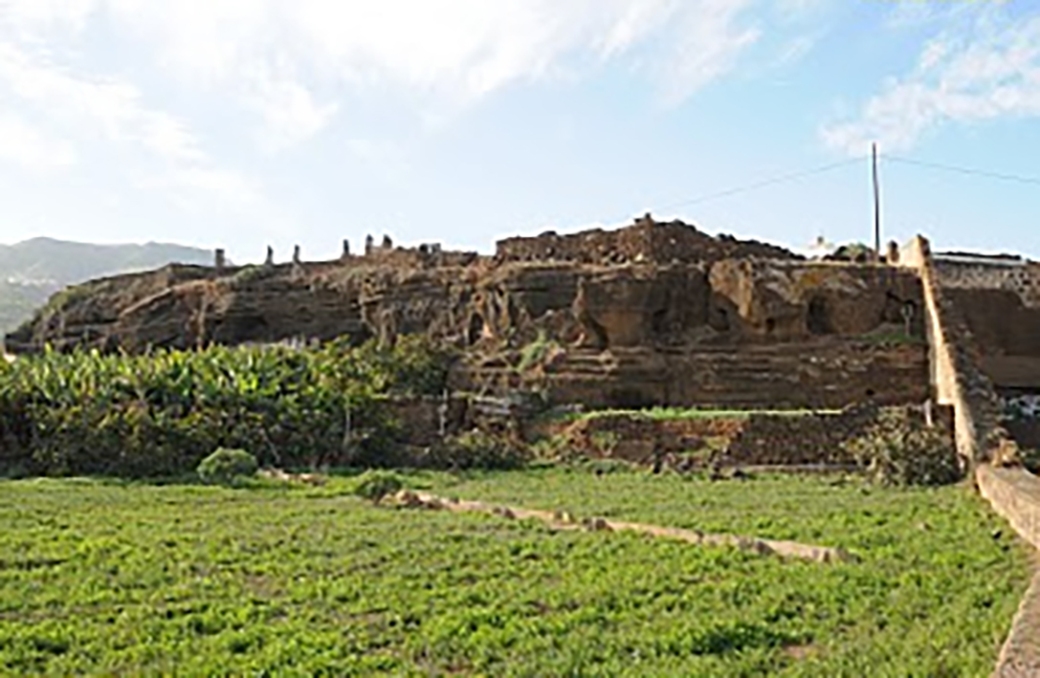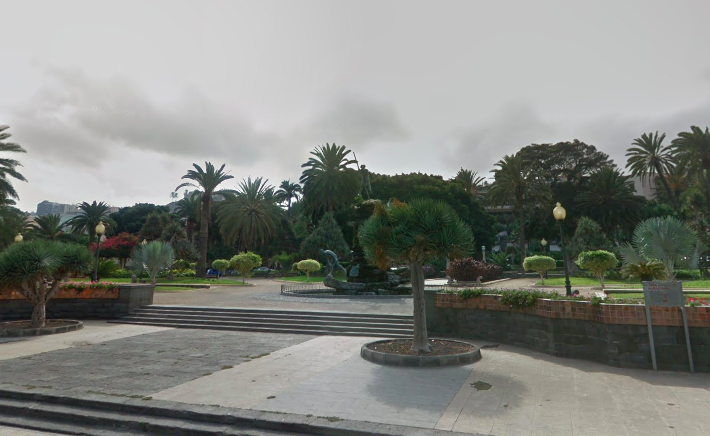Let’s go… backward! It’s important to know a little bit of history, before coming to Canary Islands. In this historical period, the interests of the cultural council of Gran Canaria are related to the North-West of the island… where it was found not only the Painted Cave of Galdar, but a lot of rests more of the ancient populations of these islands.
I already wrote about the language of Canaries in this article of Tamazigh Culture, but now I’m here to concentrate in a few lines the important things during the ages, trying to reconstruct a timeline. It’s not so easy, as confirmed by Tomas Doreste, secretary of the association AZAR (Asociacion Canaria de la Cultura Tamazight) because there aren’t many references that survived to the wars and the “civilization” process that the Spanish conquers were putting in place.
So let’s start from two names, Gumidafe and Andamana: they were the first Canarian kings that reunified the island; we’re talking about the 14th century, and they had a great palace in the Caves Facaracas… an impressive place near Lomo de San Antón, you can see a map here with a little route for fast walkers.

The palace is formed by more than 30 different caves, connected one to the other. In the late 1960s they were found rests of the populations, as said, but until that epoca just a few jobs has been done to recover this small diamond on the North-West, at the point that, after years of disrespectful use, it was considered an abandoned place. In the recent years the Cabildo decided to clean the space and prepare a project, that involve an Interpretation Centre. Here’s some articles about it:
– Clean up the Facaracas Caves
– Museum Plan in Facaracas

The son of Gumidafe and Andamana (Atidamana in other versions) was called Artemi Semidan, and under his reign Gran Canaria took this name (it seems in honor to the strong opposition to the French conquers) and it lived a great period of prosperity. Artemi Semidan died in the battle of Arguineguín against the French army.
After him, the reign on the island was split in two for his descendants, Tenesor and Bentaguaire: the reign of Telde and the reign of Galdar. In Telde were concentrated the army defenses and the spiritual people. So, for example, it was there where the new warriors, ministers and priests were elected. The warriors Asantemir have an interesting story behind: they were chosen after a ritual of fertility that was celebrated once a year, the night known as “Noche del error” (“Night of the error”). In that night, young men and women were having sex in the cereal fields, without the possibility to see each other; after nine months, the cities would have had their generation of warriors, educated spiritually and physically by the Faycanes, high ministers of the reign, until reaching the age for the army. The Asentamir warriors were considered the elite of Gran Canaria, with a special position in the social class scale. Here’s some informations more:
– Asantemir, la memoria de los guerreros sagrados
– El enigma de los Axaentemir
– Asantemir, los guerreros sagrados de los Guanches
What was happening in Galdar, instead, was completely different! Galdar was more the politic capital, where the kings has the palace (now destroyed to use the materials and build the main Church in Santiago Square). Also, in Galdar it was concentrated the scientific research of that era, that was receiving news from all over the island regarding astronomy, sea conditions and nature descriptions.
From now it starts a story that can be read in different ways, according to your sympathy to Canarian people or to the Spanish conquers… 🙂
The 1 February 1482 the army of the queen Isabella I of Castile captured Tenesor Semidan (other versions says that he consigned himself, to have the possibility to start the peace negotiations). He was brought to Cordoba and baptized under the name of Fernando Guanarteme. It’s a particular choice because Fernando was also the name of the Catholic king (husband of Isabella from 1469), instead Guanarteme is the word that in Canary identifies the “major” of a place or a town. Some historical versions suggests that he requested this name to have ideally the same level of importance as the conquer king; other versions just explained that it was common to choose the king’s name in that epoca.
Whatever happened, it’s certain that we still miss a lot of dates and historical references to all this, regarding to Canary Islands, but it’s true that there was a warrior called Bentejuì, son of the Guanarteme of Telde, to drive the rebels of the island against the Catholic army. So there was also this internal war between Fernando (ex-Tenesor) who supported the foreigners kings and Bentejuì, chief of a rebel army who wanted the situation stayed as before, without any influence from abroad.
Unfortunately for Bentejuì, the rebels had to surrender to the conquers on 29 april 1483. He and the Guanarteme of Telde decided to suicide rather than accept the new kings and, it says the legend, they jump off a cliff at the shout of “Atis Tirma” (Atis = “glory to”, Tirma = “sacred mountain”, here’s the link to the reference). It’s also curious to consider the possibility of another meaning, about the word Tirma or Dirma as this particular mountain, that is a sacred place for processions and vows. In any case, with the death of Bentejuì the Canarian rebellion found definitely an end, and now it’s remembered by the touching sculpture with the same name, Atis Tirma, right in front of the Hotel Santa Catalina, where the Parque Doramas meets calle Leon y Castillo. You surely know this place if you participated in any Cabalgata for carnival! 😀

The sculpture is a composition in bronze and stone, and it represent various aborigines (including Bentejuì) in the act of jump of the mountain and found their death. The sculptor Manuel Bethencourt Santana (1931-2012) created it in 1981 in honor of the Canary history, as many in his production. You can find others operas of him in Faro de Maspalomas (Maspalomas Lighthouse), the tribute to the fighter, and in Tenerife too, Santa Cruz for example, with the tribute to the dead of 25 July 1797.
But, regarding the island of Gran Canaria and the recent history, after the end of the rebellion, the capital was definitely moved to Galdar, with Square Santiago as centre, and it started the Catholic domination. Nowadays there are many interests in recovery the history of Canary, but the process is still slow because the main economy of the island depends by the regularity of tourism… it’s only in the last years that the Govern is trying to attract cultural tourists and alternative travelers, developing museums and routes. It’s also what I’m trying to do here, with this blog… so I really hope they’ll have success!
Here’s another link of a description written by Jose Quintana S. that explains (in Spanish language) about the meanings of Atis Tirma shout, a very interesting reading. In general, we can say now that it’s an exaltation of the Canarian lands. You can find the original book in free edition at Memoria Digital de Canarias or here: Atis Tirma, Jose Quintana S., second edition, 1967.
Here’s other references, for who is interested in read something more about the last days of Bentejuì and how the rebellion battle ended.
–> Article Bentejui… Atis Tirma.
–> Article Tenesor Semidan, GuanchesPedia.
I also suggest a visit in the library of the Association AZAR, in the centre of Vegueta, Las Palmas. You can fin the map here, and probably me there… 😉
Ahul to everybody!
LA


5 thoughts on “Atis Tirma! (The last warrior: Bentejuì)”